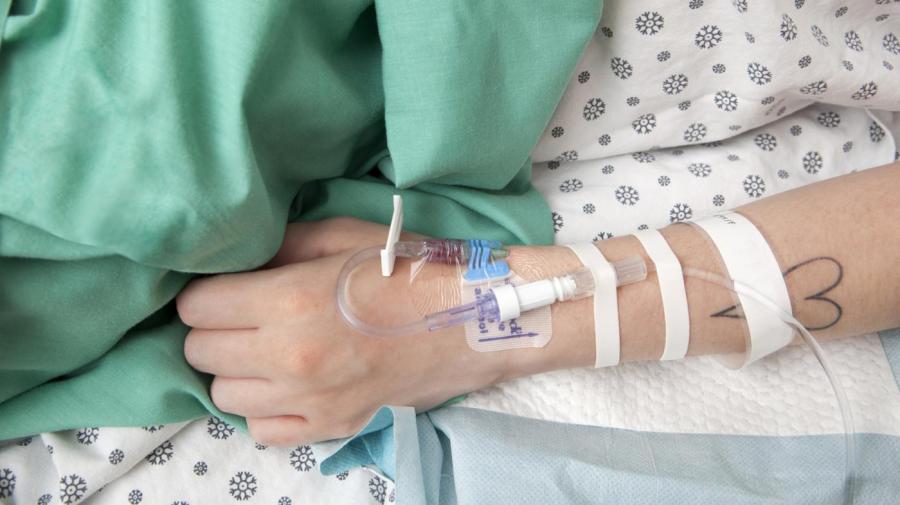Why Do Hospitals Use a Saline Drip in an IV?

Hospitals use an intravenous sodium chloride solution to supply water and salt to the body to alleviate dehydration, according to Healthline. Saline drips are mostly water with small amounts of salt and sugar added to maintain the body’s proper balance of electrolytes in the blood. Intravenous rehydration occurs most often in children who are too ill to drink water or keep down fluids through the digestive system.
Healthline explains that the intravenous solution is stored in a plastic bag and distributed through a plastic tube. The bag is held higher than the patient’s head, and a needle with a tube on the end of it is inserted into a patient’s vein somewhere in the arm. The needle is kept stationary by taping it to the arm.
The amount of fluid entering the body is regulated through a pump or a valve in the tube. Healthline indicates treatment for dehydration depends on the severity of each case. The dosage of intravenous sodium chloride changes based on a person’s weight, age, medical condition and response to treatment, according to MedcineNet. Doctors and hospitals may also use a saline drip to deliver other injectable medications. Although hospitals most commonly use intravenous sodium chloride solutions, clinics and doctor’s offices may also have these medications available for patients.





